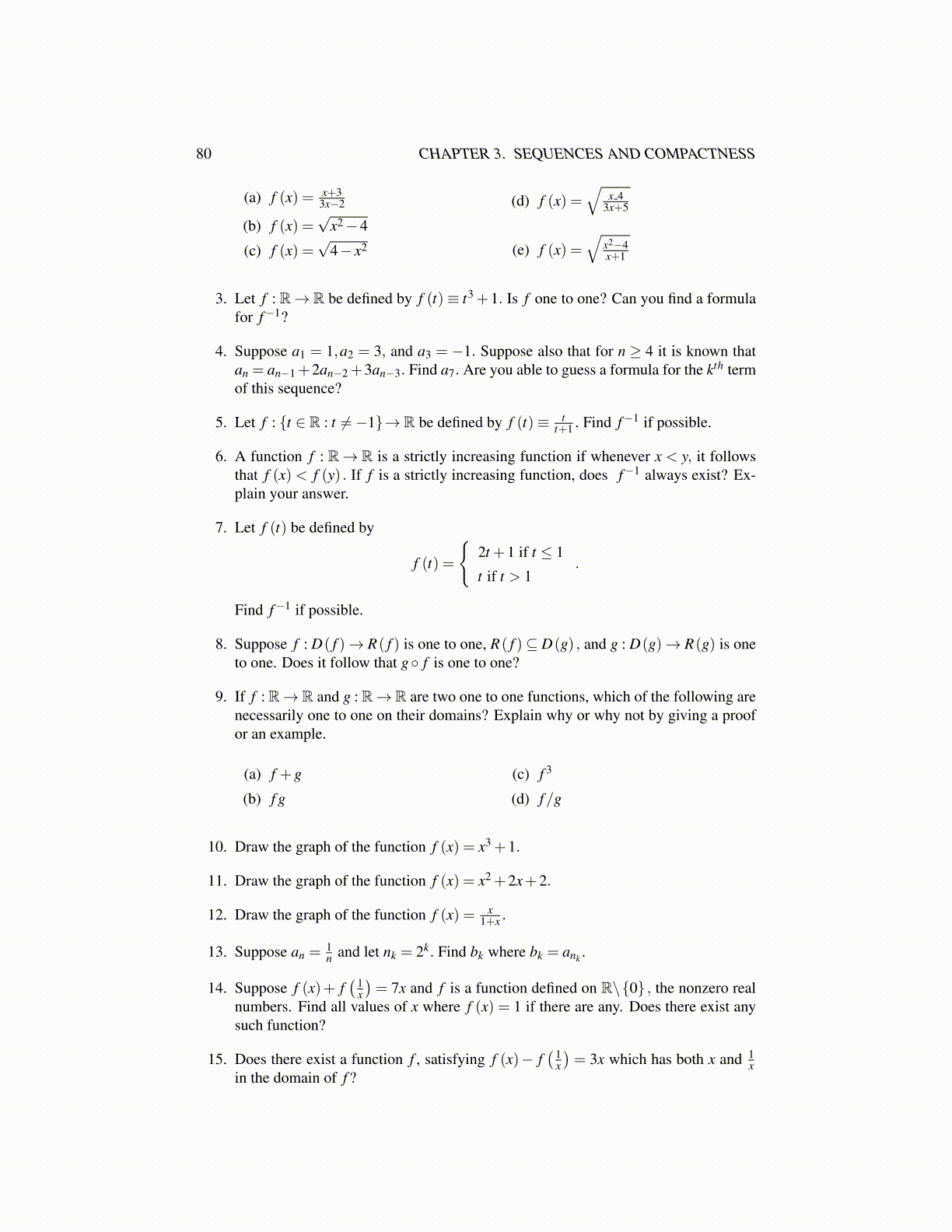
80 CHAPTER 3. SEQUENCES AND COMPACTNESS
(a) f (x) = x+33x−2
(b) f (x) =√
x2 −4
(c) f (x) =√
4− x2
(d) f (x) =√
x 43x+5
(e) f (x) =√
x2−4x+1
3. Let f : R→ R be defined by f (t)≡ t3 +1. Is f one to one? Can you find a formulafor f−1?
4. Suppose a1 = 1,a2 = 3, and a3 = −1. Suppose also that for n ≥ 4 it is known thatan = an−1+2an−2+3an−3. Find a7. Are you able to guess a formula for the kth termof this sequence?
5. Let f : {t ∈ R : t ̸=−1}→ R be defined by f (t)≡ tt+1 . Find f−1 if possible.
6. A function f : R→ R is a strictly increasing function if whenever x < y, it followsthat f (x) < f (y) . If f is a strictly increasing function, does f−1 always exist? Ex-plain your answer.
7. Let f (t) be defined by
f (t) =
{2t +1 if t ≤ 1
t if t > 1.
Find f−1 if possible.
8. Suppose f : D( f )→ R( f ) is one to one, R( f )⊆ D(g) , and g : D(g)→ R(g) is oneto one. Does it follow that g◦ f is one to one?
9. If f : R→ R and g : R→ R are two one to one functions, which of the following arenecessarily one to one on their domains? Explain why or why not by giving a proofor an example.
(a) f +g
(b) f g
(c) f 3
(d) f/g
10. Draw the graph of the function f (x) = x3 +1.
11. Draw the graph of the function f (x) = x2 +2x+2.
12. Draw the graph of the function f (x) = x1+x .
13. Suppose an =1n and let nk = 2k. Find bk where bk = ank .
14. Suppose f (x)+ f( 1
x
)= 7x and f is a function defined on R\{0} , the nonzero real
numbers. Find all values of x where f (x) = 1 if there are any. Does there exist anysuch function?
15. Does there exist a function f , satisfying f (x)− f( 1
x
)= 3x which has both x and 1
xin the domain of f ?